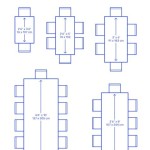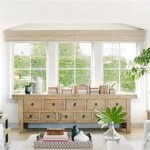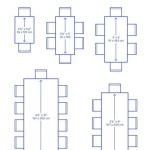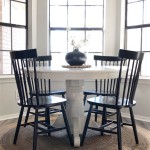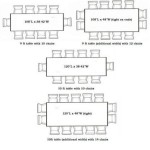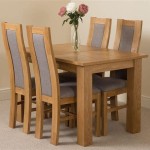Small Glass Coffee Tables for Small Spaces: Maximizing Style and Functionality
Furnishing a small living space presents unique challenges. Every piece must be carefully considered to maximize functionality without overwhelming the room. A coffee table, often a central piece in a living room, is no exception. In smaller apartments, condos, or studios, a large, bulky coffee table can easily dominate the space, making it feel cramped and uncomfortable. This is where small glass coffee tables offer a compelling solution, blending aesthetic appeal with practical advantages.
Glass, as a material, inherently possesses the ability to create an illusion of spaciousness. Its transparent nature allows light to pass through, visually opening up the area and preventing the solid, heavy feel that opaque materials like wood or metal can sometimes impart. This characteristic is particularly beneficial in small spaces where maintaining a sense of airiness is crucial for overall comfort and design.
Beyond the visual impact, small glass coffee tables also offer versatility in style and functionality. They can seamlessly integrate into a wide range of interior design aesthetics, from minimalist and modern to traditional and eclectic. The design options are extensive, ranging from simple, clean-lined glass tops with metal legs to more intricate designs featuring unique shapes, lower shelves, or integrated storage solutions. The inherent adaptability of glass allows for diverse expressions of personal style without sacrificing the essential function of a coffee table.
Key Considerations When Selecting a Small Glass Coffee Table
Before purchasing a small glass coffee table for a smaller space, there are several key factors to consider to ensure the chosen table effectively meets the user's needs and complements the existing décor.
Size and Shape
The dimensions of the coffee table are paramount. It is essential to measure the available space carefully, considering not only the square footage but also the proximity to other furniture pieces, such as sofas, chairs, and entertainment units. A general rule of thumb is to select a coffee table that is approximately two-thirds the length of the sofa. This proportion helps to create visual harmony and prevent the table from appearing disproportionately large or small. The height of the table should also be considered in relation to the seating. Ideally, the coffee table should be at the same height as the sofa cushions or slightly lower, allowing for comfortable placement of drinks, books, or other items within easy reach.
The shape of the coffee table is another crucial factor. Round or oval coffee tables can be particularly well-suited for smaller spaces, as they have no sharp corners, making them easier to navigate around. They also tend to create a softer, more inviting feel. Square or rectangular coffee tables, on the other hand, can offer more surface area for placing items but may also require more careful placement to avoid obstructing pathways. Triangular or uniquely shaped coffee tables can add a touch of visual interest and personality to the room, but it is important to ensure that their shape does not compromise functionality or create awkward angles within the space.
Consider the available clearance around the table. A good rule of thumb is to have at least 18 inches of space between the coffee table and other furniture to allow for comfortable movement. In particularly tight spaces, a nesting coffee table set can be a practical option, allowing the user to extend the surface area when needed and then tuck the smaller tables away when not in use.
Style and Design
The style of the coffee table should complement the overall aesthetic of the living room. Glass coffee tables offer a wide range of design options, from minimalist and contemporary to traditional and eclectic. A simple glass top with sleek metal legs can be an excellent choice for a modern or minimalist space, while a glass top with a wooden frame or ornate metal detailing might be more suitable for a traditional or transitional setting. The color and finish of the frame or legs should also be considered in relation to the other furniture and décor in the room.
The thickness and type of glass used in the coffee table can also contribute to its overall style. Thicker glass provides a more substantial and luxurious feel, while thinner glass can create a more delicate and airy appearance. Tempered glass is a must for safety, as it is much stronger and more resistant to breakage than regular glass. If broken, tempered glass shatters into small, rounded pieces rather than sharp shards, reducing the risk of injury.
Some glass coffee tables feature additional design elements, such as lower shelves, drawers, or integrated storage compartments. These features can be particularly useful in smaller spaces where maximizing storage is a priority. A lower shelf can provide a convenient place to store books, magazines, or remote controls, while drawers or compartments can be used to conceal clutter and keep the living room tidy. Consider the specific storage needs and choose a coffee table that offers the appropriate level of functionality.
Durability and Maintenance
Durability is an important consideration, especially if the coffee table will be used frequently or by multiple people. Choose a coffee table made from high-quality materials that can withstand daily wear and tear. The glass top should be thick and tempered, and the frame or legs should be sturdy and well-constructed. Avoid coffee tables that appear flimsy or have loose joints, as these are likely to break down over time.
Maintenance is another factor to consider. Glass coffee tables can be prone to fingerprints, smudges, and scratches, so it is important to choose a table that is easy to clean and maintain. A simple glass cleaner and a soft cloth are typically sufficient for removing fingerprints and smudges. Avoid using abrasive cleaners or scouring pads, as these can scratch the glass surface. If scratches do occur, specialized glass polishing compounds can sometimes be used to minimize their appearance.
The frame or legs of the coffee table may also require occasional maintenance. Metal frames can be cleaned with a damp cloth and mild soap, while wooden frames may need to be polished or waxed to maintain their shine. Follow the manufacturer's instructions for specific cleaning and maintenance recommendations.
Types of Small Glass Coffee Tables
The market offers a wide variety of small glass coffee tables, each designed with specific features and aesthetics. Understanding the different types available allows for a more informed decision based on individual needs and preferences.
Round Glass Coffee Tables
Round glass coffee tables are a popular choice for small spaces due to their space-saving design and smooth, curved edges. The absence of sharp corners makes them safer and easier to navigate around, especially in tight living rooms. They also tend to create a more inviting and sociable atmosphere, as people can easily gather around them for conversation or activities. These tables often feature a simple glass top with metal or wooden legs, offering a clean and minimalist aesthetic.
Square Glass Coffee Tables
Square glass coffee tables can provide a more modern and structured look. While they may not be as space-saving as round tables, they can offer a larger surface area for placing items. They work best in living rooms with a more angular or geometric design. Consider the size carefully to avoid overwhelming the space. Some square glass coffee tables feature additional storage options, such as lower shelves or drawers, making them even more functional.
Nesting Glass Coffee Tables
Nesting glass coffee tables are an excellent solution for maximizing space and flexibility. These sets typically consist of two or three tables that can be nested together when not in use, saving valuable floor space. When needed, the smaller tables can be pulled out to provide additional surface area for drinks, snacks, or other items. Nesting coffee tables are particularly well-suited for small apartments or studios where every inch of space counts. The glass tops maintain the airy feel, while the nesting design offers practical versatility.
Coffee Tables with Glass Tops and Storage
For those who need extra storage, coffee tables with glass tops and built-in storage compartments are ideal. These tables often feature a glass top with a lower shelf, drawers, or a hidden storage area beneath the top. This provides a convenient place to store books, magazines, remote controls, or other items, keeping the living room tidy and clutter-free. These tables typically have a more solid base, often made of wood or metal, to support the storage components.
Integrating a Small Glass Coffee Table into a Small Space Design
Placing a small glass coffee table strategically within a small living room is crucial for enhancing both the functionality and visual appeal of the space. Consider these tips for optimal integration.
First, prioritize the flow of traffic. Ensure that there is ample space (at least 18 inches) between the coffee table and other furniture, such as sofas, chairs, and entertainment centers, to allow for comfortable movement and prevent obstruction. Avoid placing the coffee table directly in front of doorways or pathways.
Second, balance the visual weight. A glass coffee table will naturally appear lighter and less bulky than a solid wood or metal table. Use this to your advantage by pairing it with heavier or more substantial pieces of furniture to create a sense of balance. For example, a plush, upholstered sofa can be complemented by a simple glass coffee table with delicate metal legs.
Third, utilize the transparency of glass. Position the coffee table in a location where it can maximize the flow of light and visually open up the space. Avoid placing it in a dark corner or blocking a window. The transparency of the glass will allow light to pass through, making the room feel brighter and more spacious.
Fourth, accessorize purposefully. Use the coffee table as a focal point by adding a few carefully chosen accessories, such as a decorative tray, a stack of books, or a small vase of flowers. Avoid cluttering the surface with too many items, as this can detract from the clean and airy feel of the glass. Opt for accessories that complement the overall style of the room and add a touch of personality.
Finally, consider the surrounding décor. Choose a coffee table that harmonizes with the existing color palette and design elements in the room. If the room has a neutral color scheme, a glass coffee table with a bold-colored frame or legs can add a pop of visual interest. If the room has a more vibrant or eclectic style, a simple glass coffee table with a neutral frame can provide a calming and grounding element.

51 Glass Coffee Tables That Every Living Room Craves

Top 10 Contemporary Glass Coffee Tables For Small Spaces Colourful Beautiful Things

Glass Coffee Table Small Modern Stylish Retro Contemporary Tables By Online

51 Glass Coffee Tables That Every Living Room Craves

Curved Glass Coffee Cocktail Tables To Fit Your Home Decor Living Spaces

Ember Interiors Evee Glam Glass Top Nesting Coffee Table 2 Piece Set Gold Walmart Com

Maxwell Small Brass And Glass Round Coffee Table Space

Richya Coffee Tables For Living Room Small Round Table Set Of 2 Nesting Spaces Walmart Com

5 Reasons Why Glass Tables Are A Good Idea In Small Spaces

10 Small Space Coffee Tables Ideas For Living Rooms Adria

